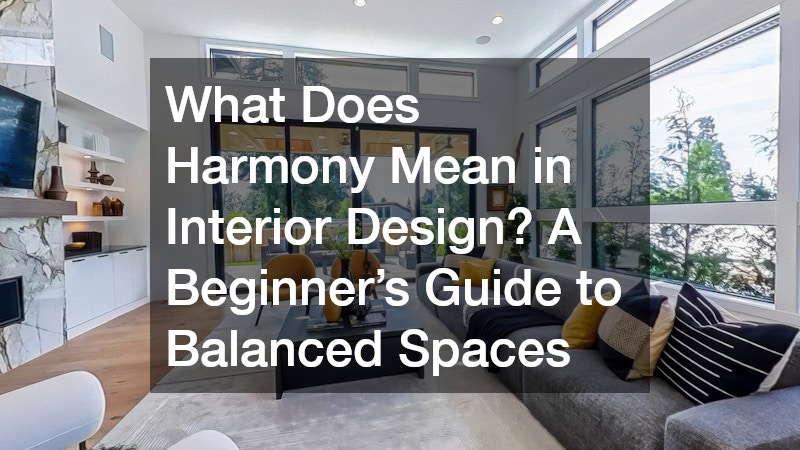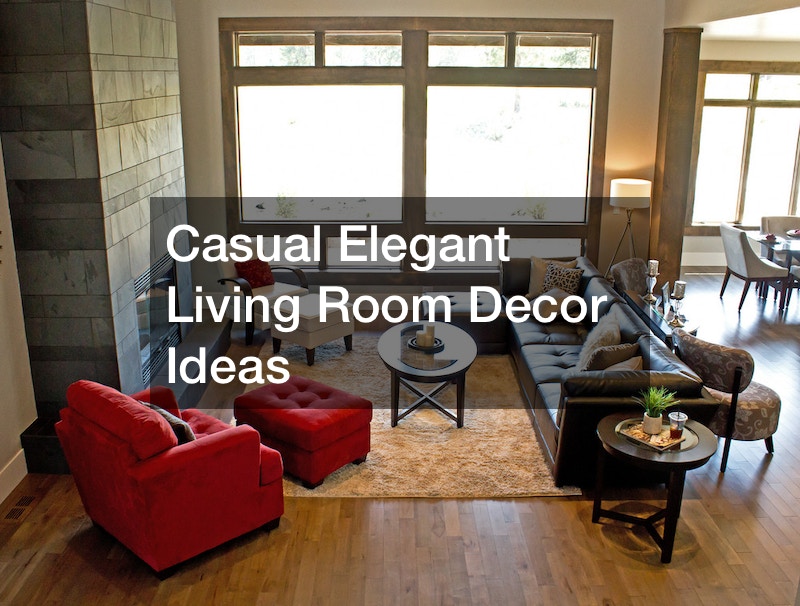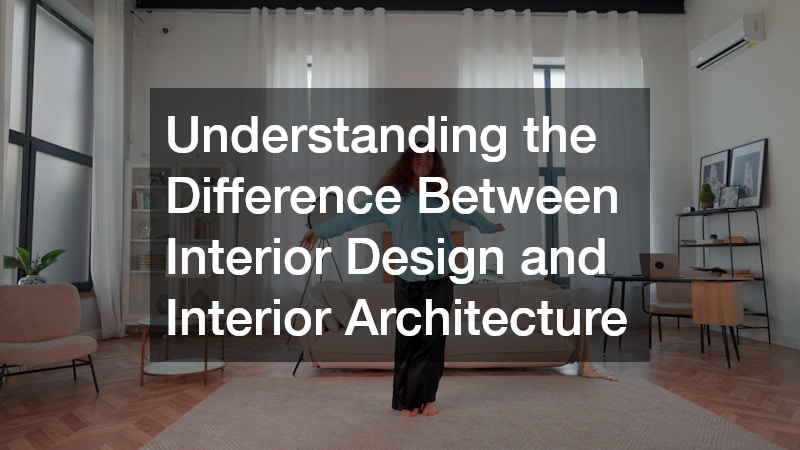
Creating a beautiful home isn’t just about filling a space with stylish furniture or trendy color palettes—it’s about making everything work together. This is where harmony in interior design plays a vital role. Harmony refers to how well the various elements of a space—colors, textures, furniture, lighting, and layout—blend to create a cohesive and visually pleasing atmosphere. When done right, a harmonious space feels inviting, balanced, and intentional.
For homeowners and those curious about interior design, understanding harmony can be the key to transforming a room from scattered and chaotic into serene and well-designed. Whether you’re refreshing a single room or planning a full renovation, this beginner’s guide will help you learn how to use harmony to bring unity and flow into your interiors.
What Does Harmony Mean in Interior Design?
At its core, harmony is about unity. It ensures that all the parts of a design—no matter how varied—belong together. A harmonious space doesn’t mean everything is the same; rather, it’s a balance where elements complement rather than compete with one another.
There are two types of harmony to consider:
- Visual Harmony: When colors, shapes, and patterns are coordinated, creating a pleasing aesthetic.
- Functional Harmony: When furniture placement, lighting, and flow support how people use the space.
For example, a room decorated with a neutral palette, warm wood accents, and soft lighting will likely feel harmonious because the materials and tones support each other. A lack of harmony, on the other hand, can leave a space feeling disjointed and uncomfortable.
Why Is Harmony Important in Home Design?
A harmonious room can positively affect your mood and well-being. In contrast, a cluttered or mismatched space may cause stress or make a room feel smaller than it is. Here’s why harmony matters:
- Improves the visual flow from one room to another
- Enhances functionality, making everyday living more comfortable
- Creates emotional comfort through calmness and consistency
- Boosts property value by presenting your home as professionally designed
Harmony is especially crucial in open-concept homes where different zones—like the kitchen, dining, and living areas—share one large space. Without cohesion, these areas can feel chaotic instead of connected.
What Elements Create Harmony in Interior Design?
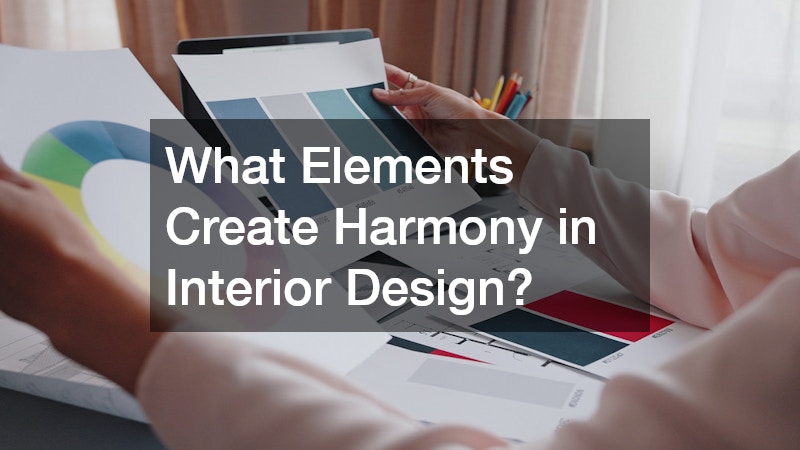
You don’t need to be a professional to create harmony. Here are the key elements that help tie a room together:
1. Color Palette
Choose 2–3 main colors and use them consistently throughout the space. You can incorporate accent colors for contrast, but keeping a cohesive palette helps maintain unity.
2. Textures and Materials
Use materials that complement each other. For instance, mixing soft textiles (like linen or velvet) with natural elements (like wood or stone) can create a grounded, balanced look.
3. Repetition
Repeat shapes, patterns, or colors throughout the room. This creates rhythm and visual consistency.
4. Proportion and Scale
Furniture should fit the space. Oversized items in a small room can disrupt harmony, just as tiny furniture in a large space can make things feel sparse or unfinished.
5. Layout and Flow
Arrange furniture in a way that promotes natural movement and doesn’t block pathways. Good layout equals functional harmony.
How Does Harmony Differ from Uniformity?
It’s important not to confuse harmony with uniformity. Harmony allows for variety, as long as there is a common thread that connects everything. Uniformity, on the other hand, can make a space feel sterile or uninspired if every element looks the same.
For example, a room that uses various shades of blue, mixed textures, and similar shapes can feel harmonious and dynamic. A room where every item is the exact same shade and material may lack warmth or character.
How to Add Harmony Without Sacrificing Personality?
Some homeowners fear that creating harmony means playing it safe or being boring. That’s not the case. Harmony actually gives you the freedom to be creative within a structure. Here’s how to achieve it while staying true to your style:
- Use a theme: Whether it’s coastal, rustic, or Scandinavian, themes provide a guiding style.
- Mix old and new: Blend vintage finds with modern pieces, using color or texture to unify them.
- Incorporate personal touches: Family photos, travel souvenirs, or artwork can all be tied into the design if they match the room’s overall feel.
Is There a Difference Between Interior Design and Interior Architecture?
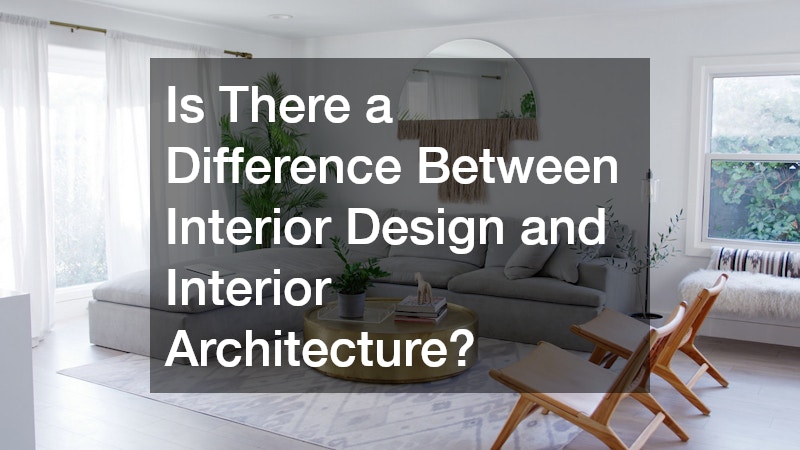
While both focus on creating beautiful, functional spaces, there is a clear difference between interior design and interior architecture. Interior design primarily addresses aesthetics and how a room feels—color schemes, furniture placement, lighting, and accessories. Interior architecture, however, involves structural elements like walls, ceilings, and plumbing, often requiring architectural knowledge and permits.
When it comes to achieving harmony, interior designers will focus on visual and sensory harmony, while interior architects may design the physical space to support a unified experience.
Final Thoughts: Bring It All Together
Harmony in interior design is the secret ingredient that makes a space feel “just right.” It’s not about being perfect or expensive—it’s about being thoughtful. When all parts of a room communicate and complement each other, the result is a peaceful, beautiful environment that feels like home.
Whether you’re redecorating a single room or designing your dream home from scratch, understanding harmony gives you a strong foundation to build on. Start small—pick a color palette, match your materials, and let the room tell a cohesive story. Over time, you’ll notice how much more enjoyable your space becomes.

